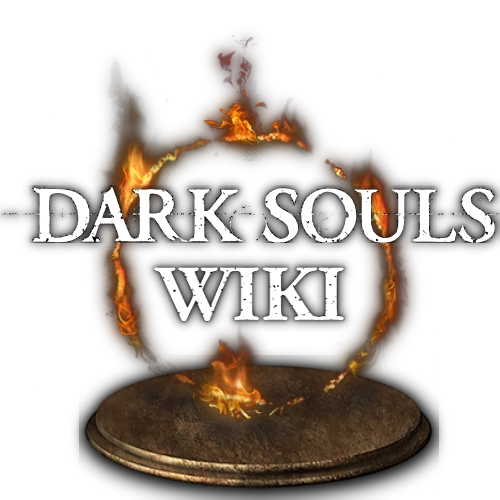- For other uses, see Parry and Riposte and Parry and Riposte (Dark Souls III).
Parry and Riposte are gameplay mechanics in Dark Souls II. They are special attacks that deal critical damage to enemies when performed at a specific time during a fight.
Note that riposte and backstabs are not considered counter attacks, thus they are not affected by the weapon's counter damage modifier and are not boosted by such effects as Old Leo Ring.
New features[]
Listed below are some minor differences found in Dark Souls II, which may be slightly confusing to those who mastered these techniques in the original Dark Souls game.
- In Dark Souls II, there is no temporary invincibility when parrying or riposting, but any damage received while performing these moves will be considerably less than normal (about 90% reduction).
- The timing of a parry in Dark Souls II is different: it must be initiated when the enemy's attack animation begins, if parrying fast and medium weapons (daggers, straight swords, curved swords, etc.) or mid-swing, if parrying slow weapons (ultra greatswords, great hammers, etc.). In Dark Souls, parry had to be performed near the end of the animation (this difference, however, may not be very noticeable, it's more of a matter of personal preference).
- There are three (3) types of ripostes in Dark Souls II, versus just one (1) in Dark Souls (see below).
- In Dark Souls II, whips can be used to riposte. This was not possible in Dark Souls.
Parry[]
Parrying is performed by pressing or holding the left-hand strong attack button (LT/L2) when using a Small Shield, Medium Shield, or 2-handed weapon. When a left-hand weapon is wielded with both hands, its right-handed moveset is reversed and the parry move must be activated using RT/R2 (instead of LT/L2). A parry can not be performed when using a power stance, but it is still possible to parry while using a power stance when the right hand weapon is a rapier.
A parried enemy will become staggered, causing them to fall to the ground. There are two possible riposte moves that can be triggered after parrying an attack: a standing riposte and a ground riposte (see below).
In most cases, all weapon's attacks can be parried, except jumping attacks (excluding Reapers). Most humanoid enemies can be parried and are also vulnerable to guard break. There are rare examples of enemies that can only be parried; The Pursuer being one such enemy. All hostile phantoms can be parried and riposted (AI and PvP).
Rules[]
Can parry[]
The following weapons can parry when equipped in the left hand:
The following weapons can parry when equipped to either hand:
The following shields can parry both spells and physical attacks, while in either hand:
- Cleric's Small Shield
- Cursed Bone Shield
- Golden Wing Shield
- Grand Spirit Tree Shield
- Magic Shield
- Shield of the Insolent
- Spirit Tree Shield
Note that spells can only be parried, and not riposted.
Cannot parry[]
The following weapons cannot parry when equipped:
- Bows and Crossbows
- Greatshields
- Reapers, Spears, Halberd, Lances and Twinblades
- Staves, Sacred Chimes, Pyromancy Flames
- Weapons and shields with a special function bound to the left-hand strong attack (e.g. Defender Greatsword augmentation or Sanctum Shield spellcasting)
The following attacks cannot be parried:
- whip attacks
- Standing two-handed light attacks from a halberd
- Two-handed heavy attack of the Syan's Halberd
- Standing two-handed light and heavy attacks from greataxes, great hammers, ultra greatswords, and curved greatswords
Special exceptions[]
The following weapons use movesets of a different class, but can still be parried:
- The broken Santier's Spear behaves like a Halberd, but the two-handed light attack is the same as a Twinblade, and thus can be parried.
- The Crescent Axe is a Greataxe, but all of its attacks (except the jumping attack) can be parried.
- Both the Drakekeeper's Warpick and the Archdrake Mace are great hammers, but behave like a halberd, thus their two-handed heavy attack can be parried.
Riposte[]
A riposte is a critical damage attack that can be executed after a successful parry (types 1 and 2) or a guard break (type 3). The exact calculations of riposte damage are not entirely clear, but thrusting weapons deal more critical damage than other types of weapons. The riposte damage is not related to the weapon's counter damage modifier (that one only affects counter attacks).
There are three (3) types of ripostes in Dark Souls II:
- Standing Riposte - This riposte is similar to the Dark Souls version. It is performed immediately after a parry, while the enemy is staggered (before the enemy falls to the ground). If performed unsuccessfully, a regular attack will be used which may cancel the enemy's staggered-state (it seems it only happens with weapons with high poise damage, smaller weapons may attack but still not break the stagger); because of this, many players prefer to safely perform the ground riposte.
- Ground Riposte (Knockdown Riposte) - This riposte is used after an enemy has been staggered and falls to the ground. It can only be executed when standing in front of the enemy. The ground riposte is easy to execute and is most widely used by players. It arguably deals less damage than standing riposte (although tests with the Chaos Rapier showed a negligible difference of about 10-20 points of damage).
- Frontal Riposte (Guard Break Riposte) - This riposte can be performed after using Guard Break on an enemy. It's a very powerful attack using similar animation to the standing riposte.
Rules[]
Cannot riposte[]
Notes[]
As with most attacks, performing a riposte or backstab with a broken weapon that has no scaling will deal no damage.


